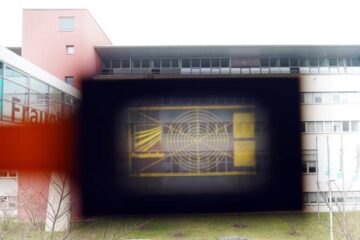Climate change needed in the European Building Industry

The building industry could significantly reduce materials-related CO2 emissions, through greater innovation within the industry itself together with action by governments to further stimulate existing processes towards environmentally friendly construction. This is the main thrust of Tessa Goverse’s dissertation, entitled “Building a Climate for Change – Reducing CO2 emissions through materials innovation in the European building industry”, which she will defend on Thursday 9 October at the Vrije Universiteit Amsterdam.
Almost 30 percent of all CO2 emissions in Western Europe are related to the built environment. Measures such as the optimization of materials use, the use of new materials and materials substitution could contribute significantly to a reduction in greenhouse gases. The European building industry is therefore an important arena in which to combat climate change. Sadly, direct government involvement does not always produce results. Linking up with existing processes in the building industry and providing them with additional stimulation would seem to be a more effective approach. Compared to other sectors, however, the construction industry is slow to embrace technological change, and does so only to a limited extent.
Goverse’s studies of innovation systems in the Netherlands, the United Kingdom, Spain and Finland, have shown that technological development in the building sector has its own national character. This results from the dynamics of the building industry, its historical traditions, as well as the development of knowledge and industry structures. Other factors are natural conditions, such as climate, the availability of resources, waterways and other geophysical factors. Finland, for example, has developed expertise in building quickly in a cold climate. The country also has a rich tradition of building in wood. In Spain, where the innovation climate is particularly suitable for concrete development, there is virtually no infrastructure for construction using wood. The river-rich delta area in which the Netherlands is situated, is mainly characterized by stony building materials. Huge demand during the period of reconstruction which followed the Second World War further stimulated the use of concrete in industrial building. In the United Kingdom, however, it was the steep increase in demand for office space in the 1980s which mainly encouraged steel construction.
Over the years, patterns in the use of building materials have become institutionalized in the educational and regulatory systems, for example. Accordingly, technology development in the building industry adheres strongly to specific innovation pathways. The prime requirement, if CO2 emissions are to be reduced, is for innovation within the building sector. Therefore, the building sector as a whole needs to become more innovative. In addition, each individual must view the options for potential reductions in CO2 emissions against the course of technology development in the local building sector. Provided that these options fit within the existing innovation systems and prevailing technology pathways, then industry will be able to take effective steps to reduce CO2 emissions without the need for a strongly interventionist policy.
The government has a role to fulfil in identifying measures that can contribute significantly to CO2 emission reduction, and which should therefore be adopted by the building industry. Because of national differences, however, the situation will vary from country to country. In Finland, for example, the popularity of wood is increasing as a result of joint efforts by the government and the timber industry to enhance innovation, improve the image of wood, and remove regulatory constraints. One of the most significant CO2 emissions reduction options is switching from concrete to wood frame building. Yet this is unlikely to be implemented successfully in Spain, for example, which lacks appropriate experience, a good knowledge infrastructure, and a strong tradition in wood frame building. Instead, standardization and current trends in materials use continue to encourage the use of cement and concrete, thereby enhancing rather than reducing materials-related CO2 emissions.
Media Contact
More Information:
http://www.vu.nlAll latest news from the category: Ecology, The Environment and Conservation
This complex theme deals primarily with interactions between organisms and the environmental factors that impact them, but to a greater extent between individual inanimate environmental factors.
innovations-report offers informative reports and articles on topics such as climate protection, landscape conservation, ecological systems, wildlife and nature parks and ecosystem efficiency and balance.
Newest articles

Advanced Brain Science Without Coding Expertise
Researchers at Helmholtz Munich and the LMU University Hospital Munich introduce DELiVR, offering a new AI-based approach to the complex task of brain cell mapping. The deep learning tool democratizes…

Transparent emissive microdisplays
… for ultra-light and compact augmented reality systems. As part of the HOT project (High-performance transparent and flexible microelectronics for photonic and optical applications), scientists from the Fraunhofer Institute for…

Bringing bio-inspired robots to life
Nebraska researcher Eric Markvicka gets NSF CAREER Award to pursue manufacture of novel materials for soft robotics and stretchable electronics. Engineers are increasingly eager to develop robots that mimic the…





















